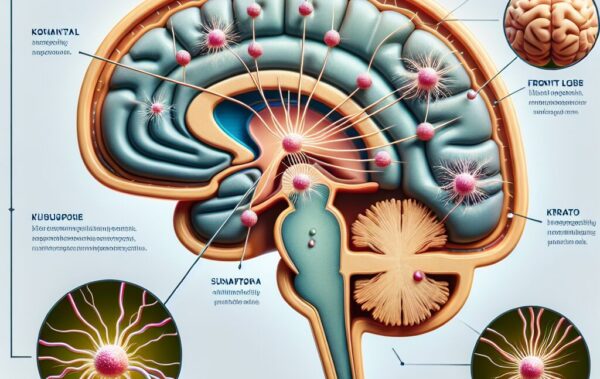Kratom, a tropical tree native to Southeast Asia, is gaining attention in the realm of natural supplements. For centuries, the leaves of the Mitragyna speciosa plant, from which kratom is derived, have played a pivotal role in traditional medicine systems of the region. Local populations have chewed, smoked, or brewed them into teas to combat fatigue, enhance productivity, and manage pain. In recent years, as kratom has made its way westward, it has sparked both interest and controversy in equal measure.
This botanical has a unique profile, due to the presence of compounds known as alkaloids, specifically mitragynine and 7-hydroxymitragynine. These substances interact with the body’s opioid receptors but do so in a way that is markedly different from traditional opioids. Kratom is said to offer pain management benefits, making it of interest to those seeking alternatives for chronic discomfort. Moreover, its use in aiding the mitigation of withdrawal symptoms from opioid addiction underscores its potential benefit in addiction therapy.
Not only are the uses of kratom diverse, but so are its forms of consumption. It can be found in various formats on the market, ranging from powders to be made into tea or capsules for convenience, as well as more concentrated preparations like extracts and tinctures. There is also an emergence of innovative kratom-infused products such as edibles and beverages catering to a variety of preferences.
Despite its growing popularity, the use of kratom must be approached with caution, paying heed to dosage and frequency to minimize potential side effects. As more research is being conducted, scientists and healthcare professionals are working to understand its pharmacology, safety profile, and scope of therapeutic effects. While traditionally utilized for pain management and endurance, modern interest is also being driven by people seeking natural remedies for a range of ailments, indicating the complex landscape of kratom use.
Traditional Opioids: Mechanisms and Effects
Traditional opioids have been the cornerstone of pain management for many years, offering significant relief to those suffering from acute and chronic pain conditions. In essence, opioids are a class of drugs naturally found in the opium poppy plant and can also be synthesized to create various medications. These can include prescription pain relievers like morphine, hydrocodone, oxycodone, and fentanyl, as well as illegal drugs such as heroin.
The primary mechanism by which traditional opioids provide pain relief is through their interaction with the opioid receptors in the brain. These receptors are part of the extensive system in the body that regulates pain, reward, and addictive behaviors. When opioids bind to these receptors, they can reduce the perception of pain by blocking the transmission of pain signals in the central nervous system. Additionally, by activating the reward center in the brain, they produce feelings of euphoria, which can lead to their misuse and, ultimately, addiction.
Opioids’ effects on the body can be profound, providing not only pain relief but also sedation and a significant alteration in mood. However, these effects come with a range of side effects and risks. Some of the common side effects include drowsiness, nausea, constipation, and slowed breathing. The decreased respiration can be particularly dangerous; in cases of overdose, breathing can become so subdued it leads to death. The risk of addiction is another serious concern as the body can quickly become accustomed to the presence of opioids, leading to dependence and withdrawal symptoms when the medication is stopped abruptly.
Moreover, the long-term use of prescription opioids can lead to tolerance—where higher doses are needed to achieve the same pain-relieving effects—and physical dependence, which is characterized by withdrawal symptoms when the drug is not taken. Withdrawal from opioids can be particularly uncomfortable, presenting with symptoms such as agitation, anxiety, muscle aches, and increased tearing.
With the rising concerns over the opioid crisis, medical professionals and patients alike are searching for safer alternatives for pain management. This search has brought kratom, a botanical substance with both stimulant and sedative properties, into the spotlight. Unlike traditional opioids, kratom interacts with opioid receptors in a way that is believed to produce fewer addictive traits, which may make it a potentially safer option for those managing pain.
Considering the complexities associated with pain management and the desire to minimize harm, it is imperative to approach the use of both traditional opioids and kratom with informed caution. The diverse landscape of pain relief underscores the need for further research to establish effective, safe, and regulated treatments.
Efficacy and Safety: Kratom vs. Opioids
In evaluating the efficacy of kratom as a pain management tool, there’s a growing body of anecdotal and, increasingly, scientific evidence suggesting that it might offer a viable alternative to traditional opioids in some contexts. Kratom shares certain pharmacological properties with traditional opioids due to its alkaloid content, which allows it to engage with the same opioid receptors within the brain, albeit with a crucial distinction. It’s believed that kratom does not recruit beta-arrestin-2, which is linked to the respiratory depression commonly associated with traditional opioid overdose deaths. This difference could be a part of what makes kratom a potentially safer option for managing pain without the same level of risk for respiratory failure.
Those in favor of kratom tout its dual nature: low doses can produce stimulant effects while higher doses typically induce opioid-like depressant effects, which can be important for those in need of pain relief. For those who use kratom, the pain management aspect is often highlighted alongside the benefit of having a lower propensity for addiction and dependency compared to conventional opioids. This dynamic has positioned kratom as a potential aid for those dealing with opioid withdrawal; many report using kratom to ease the transition away from more potent opioids and to help manage the cravings and withdrawal symptoms associated with opioid dependence.
Nonetheless, the safety profile of kratom is not without its questions. Reports vary, with some users experiencing side effects such as nausea, itching, and constipation – side effects not unfamiliar to those experienced with traditional opioids. There’s also the potential for misuse and dependency with kratom, albeit possibly at a lower risk than traditional opioids. Use of kratom should be carefully considered, particularly since the substance is not managed by standard regulatory agencies in the same way prescription medications are; its quality, purity, and concentration can vary widely.
With all this in mind, it’s clear that personal experiences with kratom can differ as much as the various products available, which span from kratom powders and capsules to more potent liquid extracts and tinctures. Some prefer the regularity and familiarity of capsules, while others may opt for the potency and immediate effects of extracts. It’s important for consumers to source their products from reputable suppliers and exercise responsible use, particularly given the lack of standardization in the industry.
To provide a more rounded view, consider this comparison table highlighting differences:
| Aspect | Kratom | Traditional Opioids |
|---|---|---|
| Primary Use | Pain management, energy boost, mood enhancement | Pain management, sedation |
| Risk of Addiction and Dependency | Potentially lower | High |
| Side Effects | Nausea, constipation, itching | Nausea, constipation, slowed breathing, drowsiness |
| Risk of Overdose | Lower risk of respiratory depression | High risk of respiratory depression |
The divergence in safety and efficacy between kratom and opioids presents a complex landscape for individuals considering their options for pain management. It’s moments like these where the nuanced understanding of benefits versus risks takes center stage, highlighting the essential nature of more rigorous scientific studies on kratom. Research could pave the way for dosage guidelines, quality assurance, and perhaps even government regulation. Only with informed strategies, collaborative research, and transparent dialogue can we hope to fully understand the potential roles of kratom and opioids in pain management and addiction treatment. As we continue to explore these substances, it remains crucial for consumers to educate themselves and approach their use with caution and discernment.
Legal Status and Regulatory Perspectives
 The legal status of kratom is a complex and evolving issue, as regulatory agencies across the globe grapple with how to categorize and manage this botanical substance. Unlike traditional opioids, which are heavily regulated due to their potential for abuse and addiction, kratom occupies a grey area in the legal landscape. In the United States, for instance, kratom is not currently regulated under the Controlled Substances Act, although the Drug Enforcement Administration (DEA) has listed it as a “drug of concern.” Various states and local jurisdictions have taken their own stances on kratom, with some outlawing its sale and use, and others allowing it to be sold freely to those over a certain age.
The legal status of kratom is a complex and evolving issue, as regulatory agencies across the globe grapple with how to categorize and manage this botanical substance. Unlike traditional opioids, which are heavily regulated due to their potential for abuse and addiction, kratom occupies a grey area in the legal landscape. In the United States, for instance, kratom is not currently regulated under the Controlled Substances Act, although the Drug Enforcement Administration (DEA) has listed it as a “drug of concern.” Various states and local jurisdictions have taken their own stances on kratom, with some outlawing its sale and use, and others allowing it to be sold freely to those over a certain age.
The variation in legal status at the state level leads to a fragmented market, making it difficult for consumers to understand their rights and for businesses to operate across state lines. For example, whereas kratom is legal and can be freely purchased in one state, it may be entirely banned just a few miles away in a neighboring state, causing confusion and potential legal issues for those who use it for pain management or to mitigate withdrawal symptoms from opioids.
The Food and Drug Administration (FDA) has expressed concerns over the safety of kratom, citing potential risks and a lack of scientific evidence to support medical uses. The FDA’s position has significant bearings on the availability and quality control of kratom products. Without FDA approval, kratom does not undergo the rigorous testing that traditional pharmaceuticals do, resulting in a market where purity and potency of kratom products can vary tremendously. Those interested in kratom for pain management or addiction treatment should thus take great care to source their products from reputable suppliers, potentially exploring offerings such as lab-tested kratom powders or GMP-compliant kratom extract capsules that provide some level of quality assurance.
Internationally, the legal perspective on kratom varies even more widely. In some of the countries where the kratom tree grows natively like Thailand and Malaysia, the use and sale of kratom is regulated or prohibited, although Thailand has recently seen a shift towards legalization for medicinal use. In Europe and Australia, many countries have strict regulations regarding kratom, treating it similarly to other controlled substances.
The tension between kratom’s potentially beneficial uses and the lack of standardization and regulatory oversight has stirred a continuous debate. Proponents of kratom argue that legal restrictions hinder access to what many consider a safer alternative for opioid pain management and withdrawal assistance. Critics, however, caution against the unrestricted sale of kratom, pointing out the need for further research, clear guidelines, and regulatory frameworks that can ensure consumer safety.
Legal considerations around kratom remain in flux, with advocates and regulatory bodies closely watching the ongoing research and emerging data. This ever-shifting legal framework makes it paramount for krators, those who regularly consume kratom, and other interested parties to stay informed about the most recent legal developments. The dialogues surrounding the regulation of kratom are complex, pointing toward an urgent need for clear policies that balance individual liberties with public health concerns, and ultimately, ensuring responsible use.
Frequently Asked Questions about Kratom and Opioids
Kratom and opioids are two substances that have often sparked questions among consumers seeking pain management solutions or assistance with withdrawal from addictive substances. The discussion around these two often evokes queries about their effectiveness, safety, dosage, and legality. In response, we’ve gathered some of the most frequently asked questions to provide you with information that can help guide your decisions.
Is Kratom as effective as traditional opioids for pain management?
Kratom has been reported by many of its users to offer significant pain relief, with the added potential benefits of lower addiction and dependency risks. However, it is important to note that while some individual experiences suggest that kratom can be effective for pain management, it has not been approved by the FDA for this use, and scientific studies are still ongoing. Opioids, on the other hand, are well-documented and approved for managing severe pain but come with a higher risk of addiction and other serious side effects.
Can Kratom help with opioid withdrawal symptoms?
Many people have turned to kratom as a natural aid for coping with the symptoms of opioid withdrawal. The alkaloids in kratom, particularly mitragynine, may help mitigate withdrawal symptoms by binding to opioid receptors without the same high potential for addiction. However, the use of kratom for this purpose has not been extensively clinically studied and therefore should be approached cautiously.
How does the risk of addiction compare between Kratom and opioids?
Kratom is believed to offer a lower risk of addiction compared to opioids. Traditional opioids have a high potential for abuse and can lead to physical dependence and addiction. Kratom, while it can also lead to dependence if misused, typically has a lower risk profile. However, more research is needed to fully understand the addictive potential of kratom.
Are there legal concerns with purchasing or using Kratom?
The legal status of kratom varies by country, state, and city. It is not currently regulated federally in the United States but is illegal in several states and municipalities. It is critical to check the laws in your area before purchasing or using kratom. Products such as kratom capsules and powders can often be purchased from reputable sources where kratom is legal.
What are the side effects of using Kratom compared to opioids?
Kratom can have side effects such as nausea, dizziness, and constipation, similar to those experienced with opioid use. However, opioids are associated with more severe side effects including significant respiratory depression, which can be life-threatening, whereas kratom does not typically cause this effect if used responsibly. Always consult with a healthcare provider before beginning any new substance for pain management.
These are just some of the many questions that people have about using kratom in comparison to traditional opioids. As the interest in kratom continues to grow, it is vital to continue researching and providing accurate, reliable information so users can make informed decisions about their health and wellness. Whether considering kratom for pain relief, as an aid in overcoming addiction, or for its other purported benefits, understanding the nuances of these substances is key to safe and responsible use.









